Preparation of Pre-feasibility Report(PFR)/Detailed Project Report(DPR) /Revised Cost estimates(RCE)
MULLAPERIYAR NEW DAM
- The proposed New Dam at Mullaperiyar is a straight gravity concrete dam. The structure consists of a main dam and a small saddle dam on the right side. The spillway is located in river portion and is located +366.0m downstream of the existing old Mullaperiyar Dam.
- In the recent past, Mullaperiyar region has experienced floods of high magnitude flood and increased seismicity. Hence, these aspects have been studied in detail by IIT Delhi and IIT Roorkee. The recommendations of these reputed institutions have been followed in the design of the new Mullaperiyar Dam.
- The DPR has been submitted to Government on September 2011.
- The work of Environment Impact Assessment study (EIA) of new Mullaperiyar dam has been awarded to M/s Pragathi Labs & Consultants Pvt.
- Detailed Project Report (Revised)of Mullaperiyar New Dam is under preparation, (Revised as per latest guidelines and as per revised Cost).Procedures for EIA/EMP Clearance is in progress.
- Procedures for Forest Clearance and Wild life Clearance has been initiated.
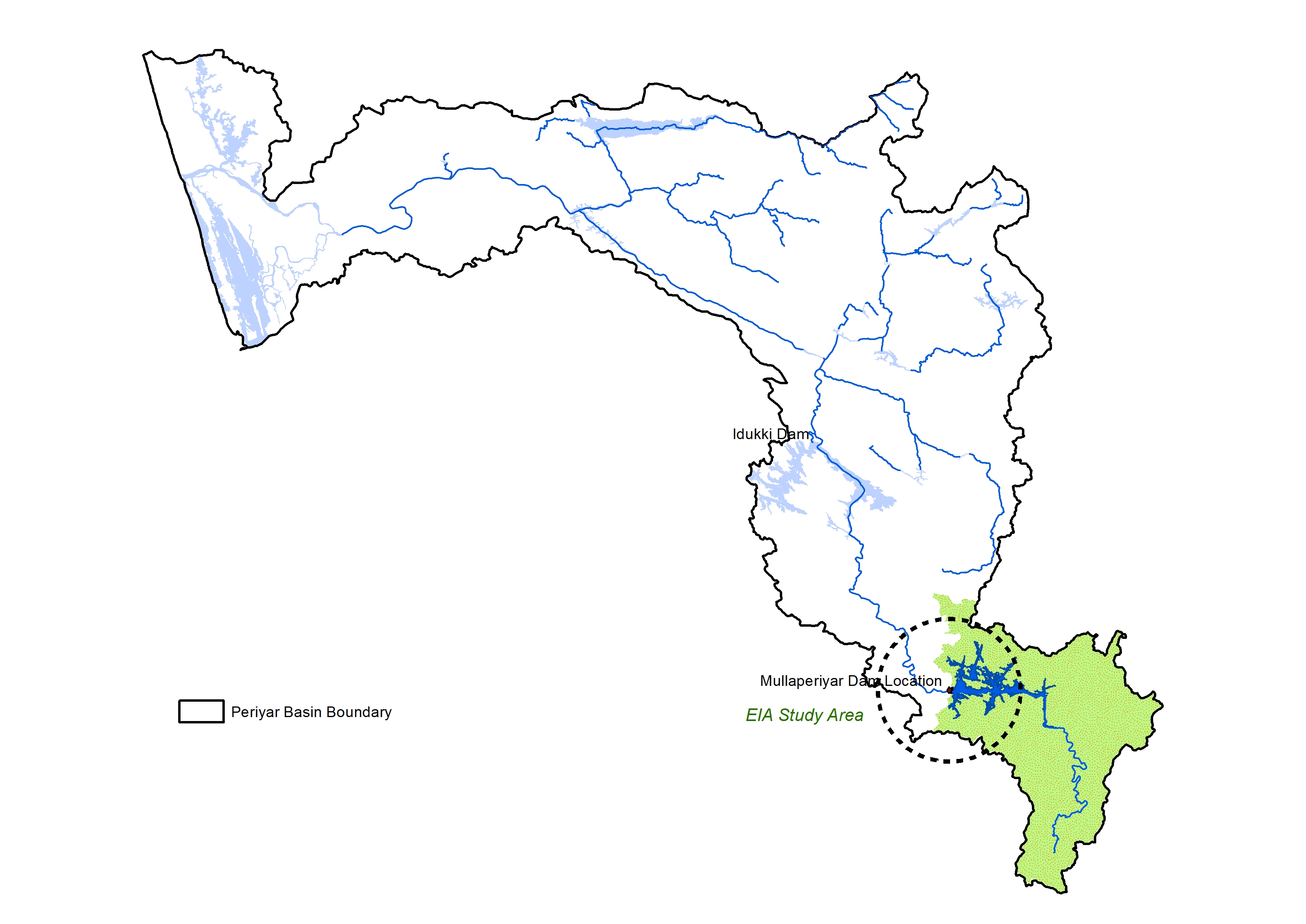
SUSTAINABLE ALTERNATIVE TO KURIYARKUTTY KARAPPARA IRRIGATION PROJECT(SAKKIP)
- The project is proposed to be revived in a sustainable manner for enhancing the water availability in the rain shadow regions of palakkad district.ie Kozhinjampara area along with Eruthempathy and kanjikode, which is expected to be an improvement in the living standards of the inhabitants in that region.
- The Task has been assigned to M/s Tata Consulting Engineers Ltd.
SEETHARKUNDU SCHEME
- Meenkara and Chulliyar reservoirs face water scarcity and it could not be filled upto FRL in many years by water from its own catchment. Hence a proposal was initiated to connect a stream from Seetharkundu waterfalls of Nelliyampathy hills to these reservoirs based on efficiency and feasibility.
- Topographic survey of the work is progressing through KERI Peechi.
- Pre Feasility report of Seetharkundu Scheme is under preparation.
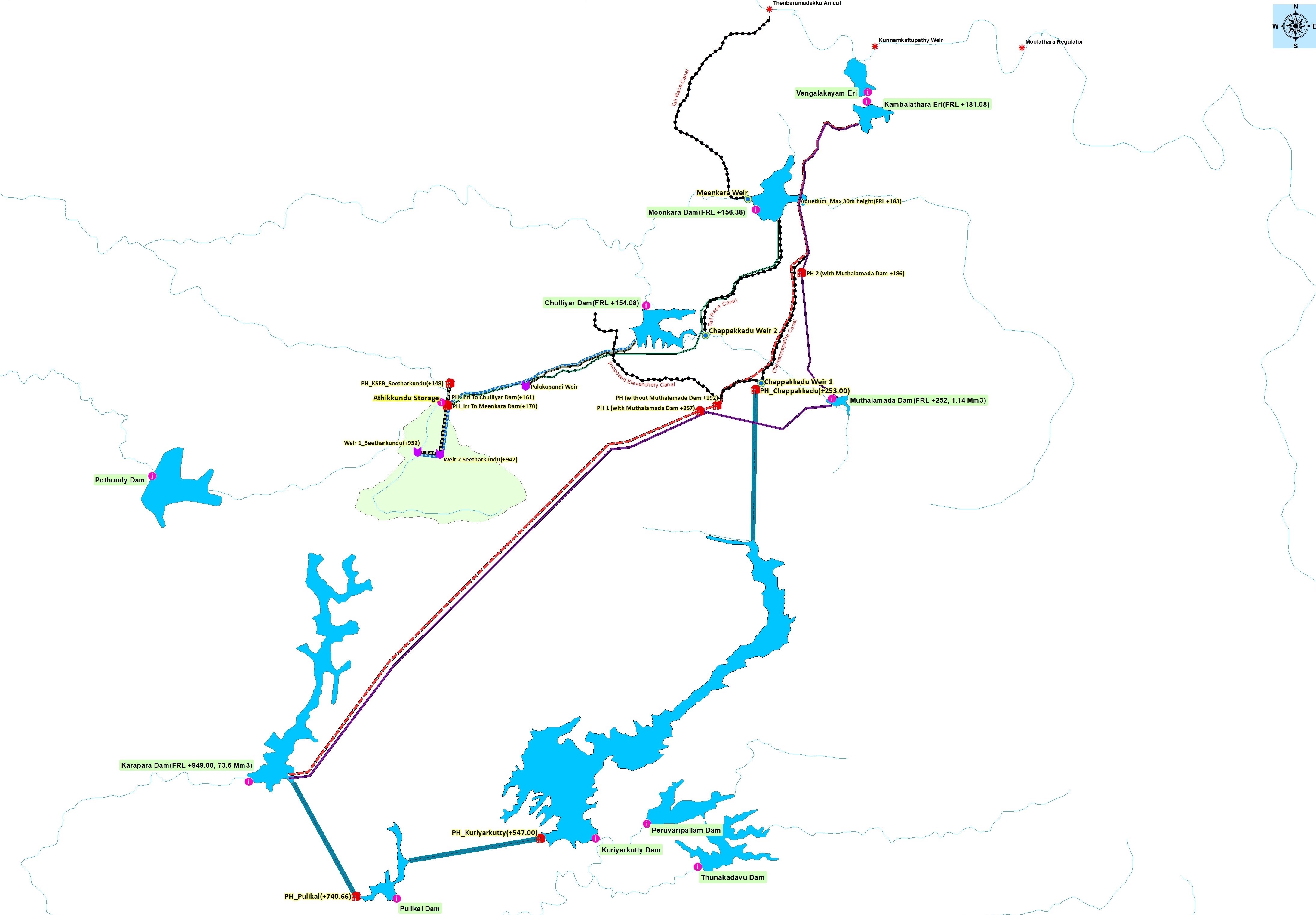
ATTAPPADY IRRIGATION PROJECT(AIP)
- The Attapady Irrigation Project(AIP) envisages the construction of concrete gravity dam across Siruvani river, a tributary of Bhavani river at chittur in Agali Village of mannarkkad Taluk in Palakkad district of Kerala state. It is proposed to irrigate a Gross Command Area of 8738 hectares. Total cost of the project is 497 crores.
- The DPR has been submitted to CWC through e-PAMS software.
- The work of Environment Impact Assessment study (EIA) has been awarded to M/s Mantec Consultants Pvt. Ltd, New Delhi vide G.O (Ms) No. 9/2016/WRD dated 03/02/2016 for an amount of Rs.15.36 Lakhs( including service tax ).
- Steps for forest clearance has been initiated.
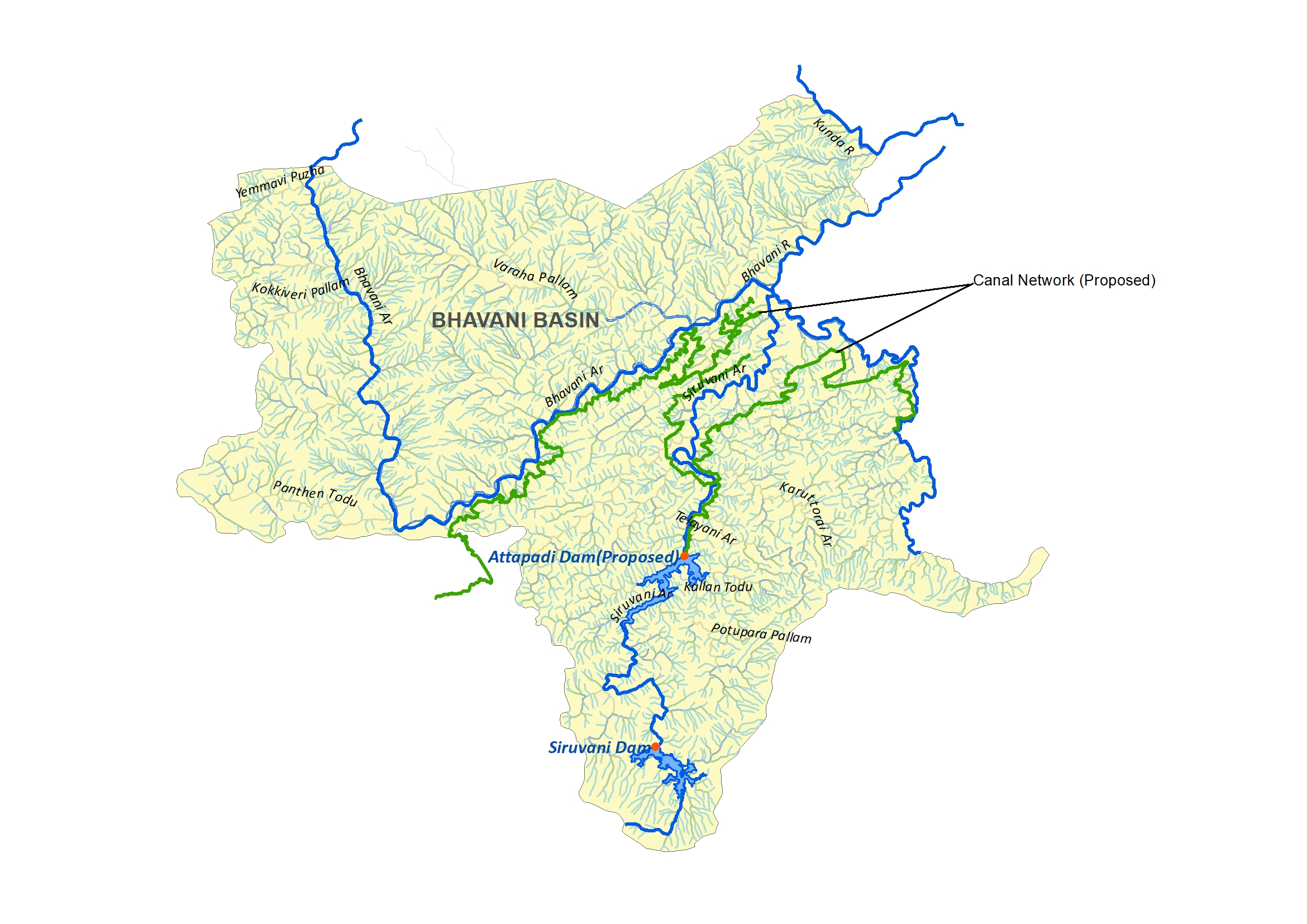
VAMANAPURAM IRRIGATION PROJECT(VIP)
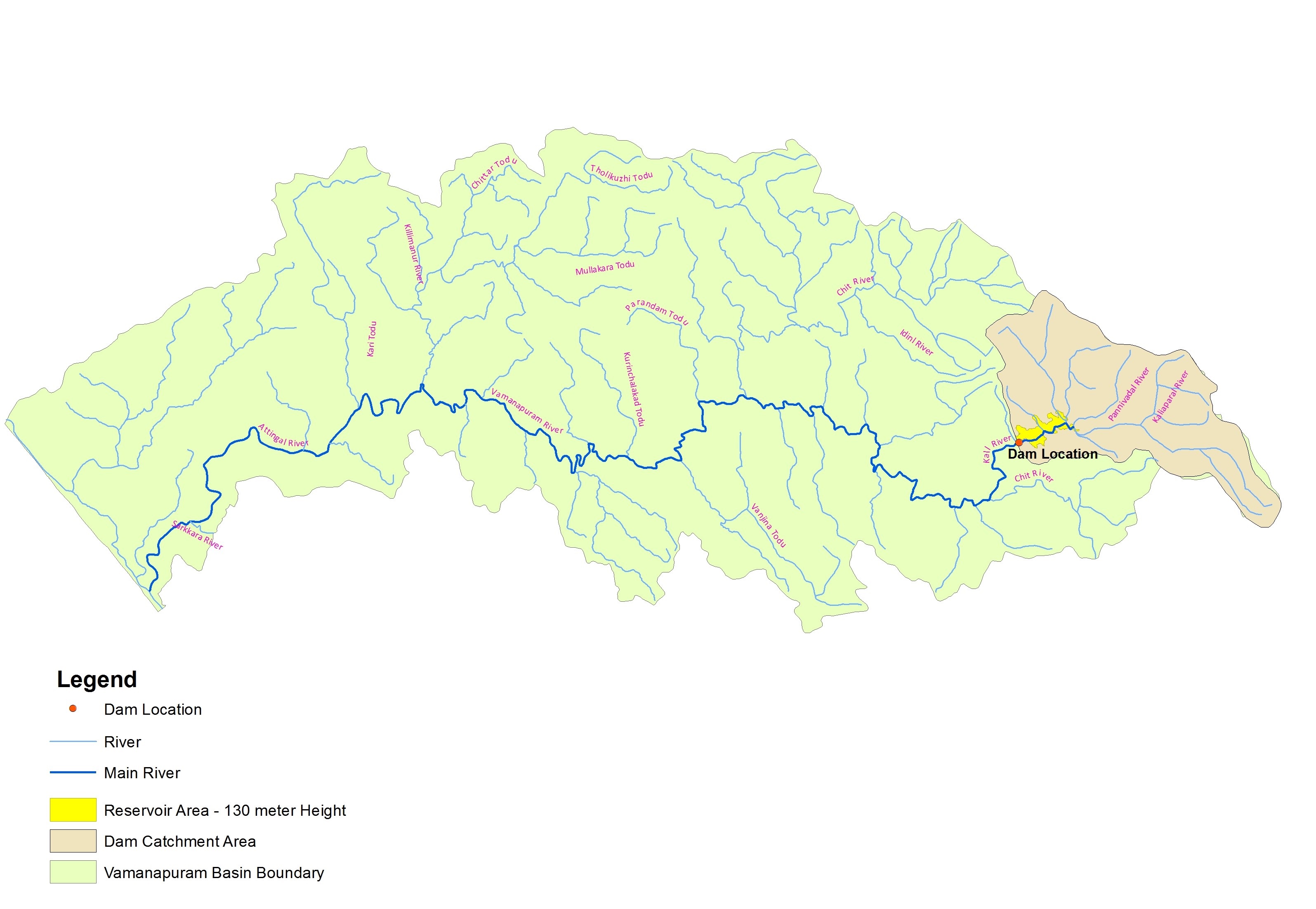
- Vamanapuram river is the chief source of drinking water for north part of Thiruvananthapuram district including Varkala and Attingal municipalities and numerous panchayats.
- During the recent summers, it is observed that the water level in the Basin plummets alarmingly. In this circumstance, it is proposed to explore the possibility of reviving the Vamanapuram Irrigation Project (VIP), which was conceived during 1970s but was shelved due to some social protests. It is perceived that the project is vital for future water security of Thiruvananthapuram district, especially its northern parts and also can serve multiple purposes such as Irrigation, Water Supply, Electricity Generation and Tourism.
- Steps has been initiated to revive the Project and a Technical Committee has been constituted, for the preparation of a Pre-Feasibility Report (PFR) on the project in order to analyse the technical, economic, social and environmental constraints of the same.
IRRIGATION PROJECTS IN KABANI BASIN
The Cauvery Tribunal has awarded 30TMC of water to the state from the three river basins of the Cauvery such as the kabana in Wayanad(21TMC),the Bhavani in Palakkad(6TMC) and the Pambar in Idukki(3TMC).
- In order to formulate the projects in Kabani Basin as per the CWDT award(detailed below) it is proposed to constitute a Technical Committee for the preparation of Detailed Project reports(DPR) of Kadamanthodu and Thondar Projects and Pre-Feasibility Reports (PFR) of Chundalipuzha Irrigation Project, Noolpuzha Irrigation project ,Kallampathy Irrigation Project, Peringottupuzha Irrigation Project and Thirunelly Irrigation Project.
Allotment to Kabani Basin as per CWDT award :-
| S.No | Kabani Basin | Allotment as per the final order of the Tribunal in TMC |
|---|---|---|
| 1 | Korapuzha | 2.80 |
| 2 | Noolpuzha | 1.25 |
| 3 | Banasurasagar | 0.84 |
| 4 | Thirunnely | 1.81 |
| 5 | Thondar | 1.75 |
| 6 | Peringottupuzha | 1.37 |
| 7 | Kallampathy | 2.49 |
| 8 | Kadamanthodu | 1.53 |
| 9 | Chundalipuzha | 1.31 |
| 10 | Minor & Lift Irrigation Works | 2.55 |
| 11 | Water Supply | 0.20 |
| 12 | Industrial Uses | 0.02 |
| 13 | Emergency requirement for plantation crops | 0.75 |
| 14 | Reservoir Loss | 0.98 |
| 15 | Share in Balance water | 0.91 |
| Total | 20.56 say 21 TMC |
IRRIGATION PROJECTS IN CHALIYAR BASIN
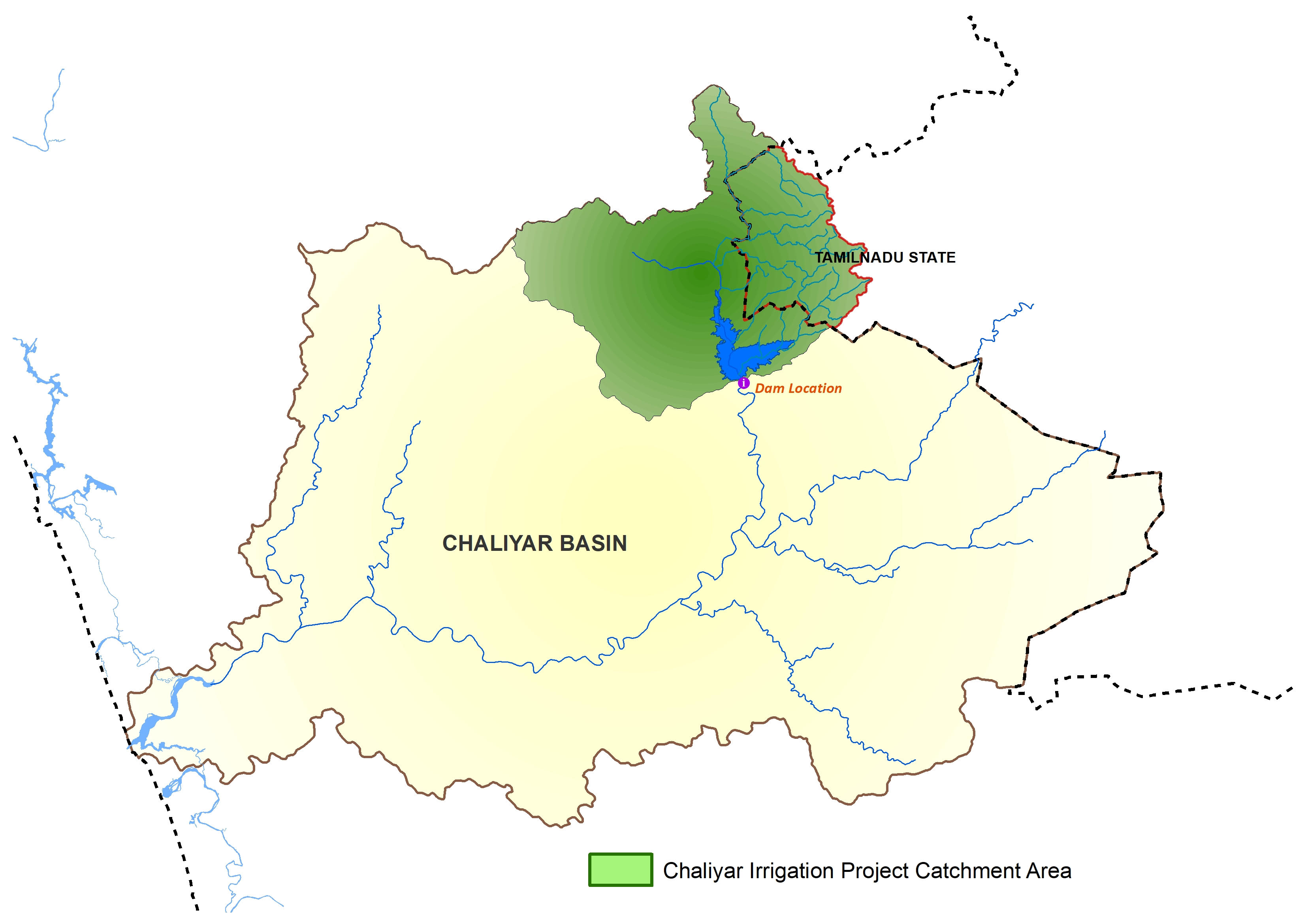
Chaliyar river originates from the Ilambalari hills in Gudalur Taluk of Nilgiri District in Tamil Nadu, at an elevation of 2,066 m above mean sea level. This inter-state river has a total drainage area of 2,923 km2 out of which 2,535 km2 lies in Kerala State and the rest 388 km2 area falls in Tamil Nadu. The river is having a length of about 170 km. The Chaliyar River flows through Nilambur, Mambad, Edavanna, Areecode, Vazhakkad and Feroke before joining the Arabian Sea at Beypore. The Chaliyar River Valley Project envisaged, on the basis of Master Plan for Irrigation Projects in the State in 1970, for the construction of a storage reservoir to irrigate lands situated in Malappuram and Kozhikode districts through a net work of canals. Though the project was envisaged in 1970 the investigation work of the Project was started only in 1980. After some preliminary efforts the process of investigation was suspended from April 1986 due to paucity of funds. . In the light of the Floods of 2018 the necessity of Flood Control Dam at Chaliyar has become inevitable. In order to revive the Project steps has been initiated to constitute a Technical Committee for the preparation of a Pre-Feasibility Report (PFR) on the project in order to analyse the technical, economic, social and environmental constraints of the same.
TWIN KALLAR MULTIPURPOSE PROJECT.
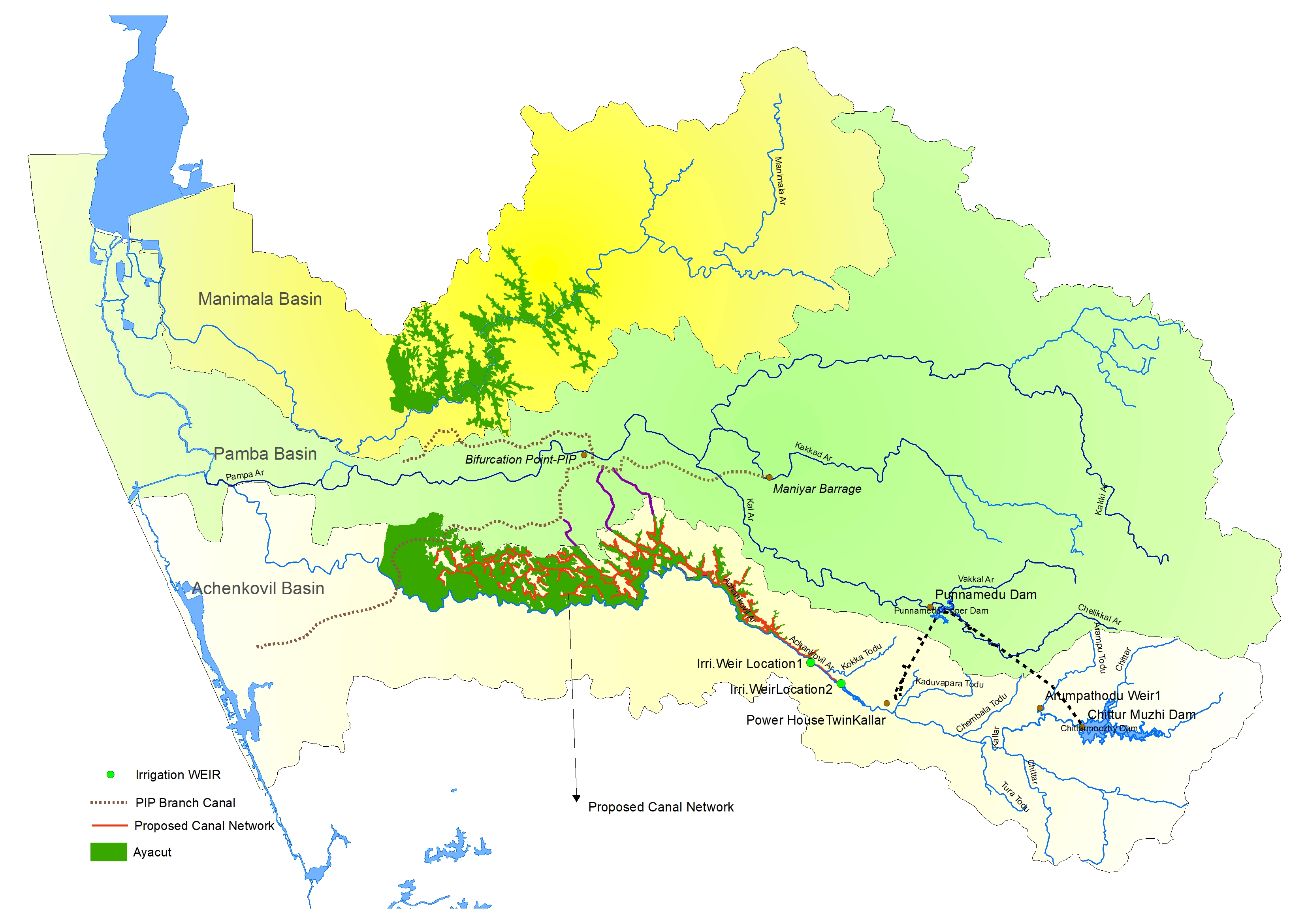
The Twin Kallar Multi Purpose project envisages a Hydro electric Project by the Kerala State Electricity Board and an Irrigation project by the State Irrigation Department by utilising the water in the Achenkovil and Pamba river basins. The name ‘Twin Kallar’ itself implies that the project involves two Kallar rivers, one in the Kallar tributary of Pamba river and the other in the Kallar tributary of Achenkovil river. The scheme envisages construction of two dams namely Punnamedu dam across Pamba-Kallar and Chitturmuzhi dam across Achenkovil- Kallar. The two dams are interconnected by means of an unlined tunnel intercepting enroute the intervening, Arambhe Thodu valley by a small dam, named Arambhe Thodu, power tunnel from Punnamedu reservoir and connected structures consisting of surge, low pressure pipe and penstock conveying the regulated waters to a power house to be located on right bank of the main Achenkovil river, near the confluence of Achenkovil and its tributary Karuppanthode. An annual generation of 249.93 MU is expected from the scheme with an installed capacity of 60 MW. The Irrigation project proposes to tap the above tail race water discharged into the Achenkovil river together with the runoff from the free catchment of the Achenkovil river for irrigating a net ayacut of 11322 hectares and a gross ayacut of 16290 hectares spread over the Achenkovil and Manimala river basins. The scheme comprises of a weir in the Achenkovil river at Kalleli (approximately 3km upstream of Kalleli bridge) of Pathanamthitta district and a canal system. The project proposes to irrigate three crops of paddy and mixed crops comprising of Rubber-Coconut-Tapioca, Rubber-Coconut-Fruit, Rubber-Coconut-Arecanut, Rubber-Coconut-Vegetables, Coconut-Banana-Fruit, Coconut-Banana-Arecanut, Coconut-Banana-Rubber, Coconut-Rubber-Pepper and Coconut-Rubber-Tapioca utilising a quantity of 138.28Mm3 of water. The ayacut is distributed over the Pathanamthitta, Alappuzha and Kottayam districts. Revised Detailed Project Report of the project was submitted to the Government for approval on 8.02.2017







